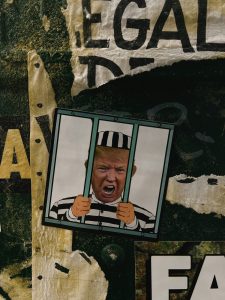by David Comfort
“Forget grammar and think about potatoes.”
Gertrude Stein
In 1918, Cornell professor, William Strunk, Jr., self-published The Elements of Style. In the introduction, his student, E.B. White, boasted that the 70-page primer fit “the rules and principles on the head of a pin,” concisely cataloging stylistic high crimes and grammatical misdemeanors. The Stuart Little author went on to reveal the purpose of what he called his teacher’s Parvus Opum, or “Little Book”: to rescue the writer “floundering in the swamp… delivering his man up on dry ground… or at least throw him a rope.”
Bestselling novelist, Stephen King, concluded in the introduction to his 2000 title, On Writing, that The Little Book contained “little or no detectable bullshit,” and that his own title was also short “because most books about writing are filled with bullshit.”
Many agreed. The Elements of Style became a pioneering classic, apparently delivering drowning scriveners to dry ground. With the serial adjectives he spurned, White concluded, “Longer, lower textbooks are in use nowadays, I daresay — books with upswept tail fins and automatic verbs.” But — indulging himself in not one, but two, adverbs — he insisted that none “come to the point as quickly and illuminate it as amusingly.”
Countless other lines have been tossed into the high seas of literature since the Elements. Today’s writer, now with more ropes on him than Gulliver under the Lilliputians, must decide which are lifesavers and which are nooses.
University of Edinburgh English chair, Geoffrey K. Pullum[1], asserts that the latter outnumber the former in Strunk and White’s style and usage primer. “Both authors were grammatical incompetents,” he writes. “The book’s contempt for its own grammatical dictates seems almost willful, as if the authors were flaunting the fact that the rules don’t apply to them.”
Even so, most would agree with King that the Little Book’s stylistic rules, if not the usage rules, are bulletproof and timeless.
But does Shakespeare, Professor Strunk’s exemplar, flaunt the fact that the professor’s law didn’t apply to him either?
Don’t overstate, overexplain, or pontificate.
Omit needless words: be clear and concise.
Don’t use a twenty dollar word when a ten center will do.
Don’t affect a breezy manner.
Some might say that, in their bloviations, Hamlet, Othello, Macbeth, and Falstaff not only bend these commandments, but bury them.
Was the arbiter of style and his supporters – Gardner, Zinsser, etc.– blinded by the Emperor’s New Clothes? Heretics argue that Shakespeare turned the King’s English into Elizabethan ebonics. For every page of a published play, half is devoted to explanatory footnotes. Did the Bard commit Strunk and White’s own “most unpardonable sins”: “showing off,” “using mannerisms, tricks, adornments”?
Shakespeare’s subjects insist he created the deepest, most dramatic, eloquent characters in history. His detractors call them breast-beaters and chicken-littles. Stylistically, he tops Proust, Joyce, and others as a verbal dandy.
Is Shakespeare’s style exemplary? Or, is it much ado about nothing?
The latter, charged Voltaire. He called Hamlet, “a vulgar and barbarous drama which would not be tolerated by the vilest populace of France or Italy.”
Grading the Bard’s composition, Samuel Johnson said he had to red pencil every “six consecutive lines.” Dickens found his stories “so intolerably dull that it nauseated me.” Tolstoy, who rarely criticized anybody, called the tragedies and comedies “rude, vulgar, and senseless.” And George Bernard Shaw threatened to “dig him up and throw stones at him” for “his monstrous rhetorical fustian, and unbearable platitudes.”
***
“Style is knowing who you are, what you want to say,
and not giving a damn.”
Gore Vidal
The premise of Strunk’s Little Book boils down to this: “A careful and honest writer does not have to worry about style.” Implying that the careful and honest don’t need the manual, and the careless and dishonest do? Anyway, most authorities agree on the importance of honesty. Gordon Lish told Dick Cavett: “The secret of good writing is telling the truth.” But, the legendary Knopf editor seemed to change his mind later: “Never be sincere – sincerity is the death of writing.” [2]
This sort of mixed message or apparent contradiction is what gives the aspiring writer indigestion – the elements of bile, not style.
Experts generally agree that good writing – publishable writing — should be clear, concise, and compelling. The Three C’s. But beyond that, it’s a free-for-all of conflicting rules and regulations worthy of an Islamic state.
Death to adjectives, adverbs, verbs-to-be, colons, semi-colons, the second person, ellipses, exclamatories, passives, pariphrastics; i before e except after c. But not always.
Never use multiple points-of-view. But, for some, the more points of view the better – especially the Russians.
Never start at the beginning – in media res. But, sometimes, the beginning should begin at the beginning.
Beyond usage and mechanics, the debate heats up on the weightier issues.
“Less is more,” said Robert Browning and so many after him. “I don’t believe that less is more. I believe that more is more,” Stanley Elkin — speaking for Melville, Faulkner, Thomas Wolfe, and so many more — told the Paris Review.
Insist most story gurus: the indispensable building blocks are plot, character, setting, and theme. “The true enemies of the novel are plot, character, setting and theme,” novelist, John Hawkes, told his students at Brown. [3]
“Never try to make anything up – neither plot nor narrative,” Dostoyevsky advised young writers. “If you want to be true to life, start lying about it,” John Fowles countered.[4] And, according to critic Grigory Yeliseyev, Fyodor did too: he called Crime and Punishment “the most stupid shameful fabrication.”
Even the audience question is a bone of contention among the masters. “I write to please myself,” Tobias Wolff told the Paris Review “What shit… Write for yourself—why?” objected his friend, Richard Ford.
The late great novelists were especially vehement in their stylistic denunciations of one another. Trollop called Dickens’ work “jerky, ungrammatical, and created by himself in defiance of the rules… No young novelist should ever dare to imitate it.” H.G. Wells charged that Henry James “splits his infinitives and fills them up with adverbial stuffing… His vast paragraphs sweat and struggle… And all for tales of nothingness.” Faulkner called Mark Twain “a hack writer who would have been considered fourth-rate in Europe.”
But experts today continue to tout these masters as style role models who speak with a single voice. What really causes student writer indigestion is the party-line double standard: The Great X, Y, or Z did it, but you can’t.
In his “Ten Rules of Writing,”[5] Elmore Leonard cautioned: “Avoid detailed descriptions of characters, which Steinbeck covered.” Might this not lead to under-developed, 2-D, or stereotypical characters – the great pitfall of storytelling? And, because Steinbeck provided such detail, and Dickens before him, all the way back to Homer, nobody else should be allowed?
“Never use a verb other than ‘said’ to carry dialogue,” Leonard goes on. Death to “he jested,” “ejaculated,” “trumpeted,” “chortled,” “chirped,” “hissed.” Good. But might 1,000 saids lead to another universally acknowledged pitfall – Monotony?
Exclamation points are even more horrifying to the bare-bones school than semi-colons. Leonard’s Rule 5: “You are allowed no more than two or three per 100,000 words.” But some masters loved them, especially the Europeans. Not to mention, a certain bestselling American. OK, then, “If you have the knack of playing with exclaimers the way Tom Wolfe does, you can throw them in by the handful,” allows the Get Shorty creator. “YOU ARE HEREBY EMPOWERED!!!!!!!!!!!!!” wrote the man in full in his Electric Kool-Aid Acid Test.
With his dispensations, Leonard is more lenient than many an MFA or writer’s conference mentor. Most will red pencil a sentence or passage that violates current canon. “But Tolstoy did it,’ the student objects. “So, you’re Tolstoy?” demands the professor. Which of course is the same question Tolstoy got when his teacher caught him imitating Shakespeare.
***
“There are three rules for writing a novel.
Unfortunately, no one knows what they are.”
W. Somerset Maugham
The greatest style disagreements have always arisen between the two schools of composition: The More-Is-More Montagues versus The Less-Is-More Capulets. The first camp writes by addition, the second by subtraction.
MM stylists like 1,000 word sentences (Hugo through Bolaño). They make editors cut hundreds of pages (as Perkins did for Thomas Wolfe). Or, loading their Royal with a 120-foot scroll, they type 150 words a minute for 21 sleepless nights. That’s how Kerouac wrote On the Road. Some called it genius. Truman Capote said, “That’s not writing, that’s typing.”
The LM stylists follow the Hemingway credo: “Every first draft is shit”; “Writing is re-writing.” Their sentences are clean and well-lit, their words served in carefully budgeted food groups. Nouns are meat and potatoes. Verbs, water. Adjectives and adverbs, sugar and saturated fat trimmed in the second draft. The result is a muscular, fat-free LM narrative.
Hemingway famously asserted: “The most essential gift for a good writer is a built-in, shock-proof, shit detector.” In spite of their religious fervor, insider spats have erupted within each writing school. Papa said of his rose is a rose co-founder, Gertrude Stein: “She learned to write dialogue from a book called The Sun Also Rises. I thought it was splendid she had learned to write conversation.” [6]
Her shockproof shit detector sounding, Ms. Stein knew that the big game hunter was again dangling his modifier. She insisted that he’d learned not just dialog, but everything, from her.
According to Christina Gumbar, the Lost Generation matriarch only credited learning one lesson from one master: punctuation, from her poodle, lapping water.[7]
Like Hemingway and Stein, novelists learn far more from reading each other, than they do from professors or style manuals. “I have played the sedulous ape to Hazlitt, to Lamb, to Wordsworth, to Defoe, to Hawthorne. That, like it or not, is the way to learn to write,” asserted Robert Louis Stevenson in “The Sedulous Ape.”
The same goes for sports. Countless titles have been written about how to improve your golf game. But the best way is to shelve the book, forget all the rules, and watch Tiger or Mickelson on the tee, in the traps, on the green.
Like golfers, some writers are long game specialists, swinging for the fences with breathtaking, unpunctuated drives; others are short game specialists, laying up, then sinking chips and surgical putts. Some have a beautifully powerful but volatile swing like Daley; others an ungainly but dead-on follow-through like Palmer. Different strokes for different folks.
The writer decides which is most suited to his own natural abilities and inclinations; then he imitates one, playing the sedulous ape; then he parrots a few others; then he cross-pollinates and, with luck, creates his own eclectic game.
Of Hemingway, Gore Vidal once said: “I detest him… I thought his prose was perfect until I read Stephen Crane and realized where he got it from.” [8] In fact, the Hemingway recipe was not so simple. In addition to three cups of Crane, he is two cups Twain, one cup Stein, and a pinch of Pound. All of which, when baked, make something that is more than the sum of its parts: Hemingway.
Though some novelists have been called “sui generis,” neither Gore Vidal or anybody else has reinvented the wheel. The few who tried have regretted it. The dying words of Joyce, though he had read everybody and experimented with every style, were: “Does no one understand?”
***
“Read the racing form.
There you have the true art of fiction.”
Ernest Hemingway
If the subject of style is controversial among the experts, the subject of storytelling is even hotter. Countless plot Dr. Phils have weighed in over the years, providing their own foolproof guidelines for a great story. But why haven’t any followed their own formulae and a written a bestseller?
As with style experts, story experts disagree on many issues. There’s only one consensus rule among them which dates back to Beowulf : Don’t bore me. But as novelist and lit professor, Sandra Newman, points out, this can be challenging for the serious artist: “Paradoxically, the most interesting works of literature are often also the most boring.” [9]
Today’s reader bores more quickly than yesterday’s. He warns the author: You’ve got 30 seconds to terrify me, thrill me, break my heart, give me enlightenment, or an orgasm.
The late David Foster Wallace is among the few who have challenged the ultimatum. In his foreword to The Pale King, he warned: “The very last thing this book is is some kind of a clever metafictional titty-pincher.” Indeed, the unfinished, heavily footnoted 548-page novel — which he worked on for almost a decade and wearily referred to as “the long thing” — is all about boredom: its characters are midwestern IRS auditors. Calling Wallace’s swan song “breathtakingly brilliant and stupefying dull,” the Times Michiko Kakutani wondered if his intent were to “test the reader’s tolerance for tedium.” But Entertainment Weekly found the boredom study “entertaining, not-at-all-boring,” Publishers Weekly called it “one hell of a document,” and it became a finalist for the controversial 2012 no-win Pulitzer. Before abandoning the work and reaching the end of his rope on the patio, he told his wife that he was considering retiring and opening a dog shelter. [10]
But the Infinite Jest author was the exception, not the rule. When an editor or agent rejects a manuscript saying — Where are the plot points? What’s so-and-so’s motivation? Where is the character arc? What is the message here? – what they mean is: you’re boring me. Even so, some bestsellers – not just diet or cookbooks – have no plot points, no motivation or arc, much less a message. Still, they don’t bore anybody.
South to north, a good story engages: the groin, the heart, the head, the soul. Yesterday’s titles focused on the last pair. Today’s must stimulate the first. But, if the head is targeted, it must be the pre-frontal lobe, or what scientists call the medulla oblongata.
In addressing the reptilian brain, the sensible writer chooses a genre — Creeper (Horror, Fantasy), Jeeper (Sci Fi, Thriller), Reaper (Murder Mystery), Peeper (Romance) Bleeper (Erotic) – while avoiding a Sleeper (Literature).
The most sympathetic genre — the one least likely to bore – is Vic Lit. Today, victims are ubiquitous. Classic victim stories (Les Misérables, Frankenstein, The Grapes of Wrath, Sophie’s Choice) were enthusiastically received as Fiction. With In Cold Blood, Truman Capote portrayed killers as no less victims than their kill. He credited himself with creating “the nonfiction novel,” ignoring such minor early works in the same genre as the Iliad, the Odyssey, and the Bible.
James Frey jumped Capote’s bandwagon with A Million Little Pieces. When his “colorful mixture of spit, snot, urine, vomit and blood” was revealed to be pure Fiction, the industry reeled. Frey insisted he had only “altered small details.” Later, he told Esquire magazine, “What’s truth and what’s not doesn’t even fucking matter.”[11] Besides, he had originally pitched Pieces as a novel, but Doubleday marketed it as fact without fact-checking. Oprah, his victimized patroness, drew-and-quartered the author on TV, rendering him in the end what he claimed to be in the beginning. “I’ve been stabbed over and over and over again,” said Frey.
A writer of the same name released How to Write a Damn Good Novel: A Step-by-Step No Nonsense Guide to Dramatic Storytelling. The primer identified the three ingredients of such a novel: jeopardy, conflict, and surprise.
As with the Stylists, there are two schools of Storytellers: the Less-is-Mores, and the More-is-Mores.
The first are born of the Just-the-Facts, Jack, Dragnet school. Elmore Leonard’s anti-writing writing school, popularized by Hemingway. They are trompe l’oeil realists, not impressionists or expressionists. They hide brushmarks. They cut all words that call attention to themselves, that fog up the story, or weigh down the action. Sentence by sentence, they bulldoze plot speed-bumps – whatever seems clever, thoughtful, or ornamental.
Many literary editors now prefer the anti-writers. Algonquin’s Chuck Adams told Poets & Writers that he joked about putting a sign above his desk that read:
“Quit writing and tell me a story.”
***
Note just what it is about your work the critics don’t like –
then cultivate it.”
Jean Cocteau
The decisive battle of the bilious shit detectors was waged in 1998: Three pedigreed but aging stylists versus one feisty storyteller with a postmodern mongrel style.
Swords had crossed ten years before when Tom Wolfe made millions on The Bonfire of the Vanities, but Mailer, Updike, and Irving called the novel populist shit. Wolfe counter-attacked with his 1989 Harper’s essay, “Stalking the Billion-Footed Beast,” about a fiction Old Guard too fossilized to appreciate his revolutionary fiction nonfiction.[12]
Resentments seethed for a decade, then erupted again with Wolfe’s next bestseller, A Man In Full.
“Entertainment, not literature,” sniped Updike in his New Yorker review[13], “even literature in a modest aspirant form.”
“At certain points, reading the work can even be said to resemble the act of making love to a three-hundred-pound woman: Once she gets on top, it’s over. Fall in love, or be asphyxiated,”[14] argued Norman Mailer, speaking from the experience of tackling his own 1,200 page Amazon, Harlot’s Ghost. Man in Full tipped the scales at an anorexic 742. Mailer went on to coronate his colleague as “the most gifted best-seller writer… since Margaret Mitchell.”
Wolfe dismissed the creators of Rabbit and Dear Park as “two piles of bones.”[15] Their comrade-in-arms, John Irving, flew over the ropes and spelled the hyperventilating tag team. “I can’t read him,” he said of Wolfe, “because he’s such a bad writer.”
Now it was three against one — the hoopster, the headbutter, and the wrestler – against the diminutive dandy in full. “I think of the three of them now — because there are now three — as Larry, Curly and Moe,” he said. “It must gall them a bit that everyone — even them — is talking about me.”
“If I were teaching fucking freshman English,” Irving fumed, “I couldn’t read a sentence [of his] and not just carve it up.” When the Canadian TV Hot Type host asked if he was at war with the little man in white, Garp’s creator — overlooking a proletariat revolution or two — bristled, “I don’t think it’s a war because you can’t have a war between a pawn and a king, can you?”
But, in the end, the southern gentleman had the last word, aware that Irving and his stooges were the best PR reps he’d ever had.
“Why does he sputter and foam so?” Wolfe wondered in a statement released by his publisher.[16]
In the mid-sixties, the 34-year-old heretic published The Kandy-Kolored Tangerine-Flake Streamline Baby. The title, a collection of his pieces from the Washington Post and elsewhere, replete with exclamatories, ellipses, and neo-street speak, spawned The New Journalism. To create a buzz by tossing a Molotov cocktail over the battlements of the Bastille, he strode into his editor’s office at the Herald Tribune one morning and asked —
“How about blowing up The New Yorker, Clay?”
So the Tribune ran “Tiny Mummies! The True Story of the Ruler of 43rd Street’s Land of the Walking Dead,” Wolfe’s assault on the alma mater of his Moriartys – Larry, Curly, and Moe. It featured a portrait of editor, William Shawn, as head funeral director, surrounded by his dutiful retainers and embalmed guardians of literature, the Tiny Mummies. The satire had been inspired by The New Yorker’s invitation-only 40th anniversary party at the St. Regis which the stooges had attended and Wolfe crashed.
Shawn, who received an advance copy, fired a letter off to the Tribune’s owner, Jock Whitney. He called the article “murderous and certainly libelous,” and demanded that it be pulled from Sunday’s upcoming edition. Jock declined.
The magazine called in its cavalry. The Tribune was barraged with diatribes from Muriel Spark, to J.D. Salinger, to Professor Strunk’s sancho panza, E.B. himself. Then the magazine’s enforcer, Dwight MacDonald, pulled the pin on a 13,000-word polemic, “Parajournalism, or Tom Wolfe & His Magic Writing Machine,” for its sister publication, The New York Review of Books. MacDonald called Wolfe’s style “a bastard form, having it both ways, exploiting the factual authority of journalism and the atmospheric license of fiction.”[17]
When the smoke cleared, the magazine had a shiner, and Wolfe’s new Streamline Baby was a sensation.
From this the gonzo provocateur learned an important lesson in not boring an audience which he revealed in his “The New Yorker Affair” essay. “You can be denounced from the heavens,” he wrote,” and it only makes people interested.”
But, years before, the bestselling nonfiction novelist had learned the greatest lesson about the postmodern elements of bile and Hemingway’s shockproof, foolproof shit detector.
“Bullshit reigns!” he proclaimed in Bonfire of the Vanities, burying his exclamatory dagger in the heart of Strunk, the Stooges, and the ancient vampires of style.
23 March 2014
David Comfort has published three popular nonfiction trade titles from Simon & Schuster, and a fourth from Citadel/ Kensington. “The Elements of Bile” is excerpted from his latest trade title, An Insider’s Guide to Publishing, released by Writers Digest Books in December, 2013. Comfort is a Pushcart Fiction Prize nominee, and a finalist for the Faulkner Award, Chicago Tribune Nelson Algren, America’s Best, Narrative, Glimmer Train, Red Hen, Helicon Nine, and Heekin Graywolf Fellowship. His current short fiction appears in The Evergreen Review, Cortland Review, The Morning News, Scholars & Rogues, Inkwell, and Eclectica Magazine.
[1] Geoffrey K. Pullum, “50 Years of Stupid Grammar Advice.” The Chronicle of Higher Education, April 17, 2009
Pullum co-authored (with Rodney Huddleston) The Cambridge Grammar of the English Language (Cambridge University Press, 2002).
[2] Alexander Neubauer, Conversations on Writing Fiction: Interviews with Thirteen Distinguished Teachers of Fiction (Perennial, 1994)
[3] “Remembering John Hawkes,” Providence Phoenix, April 8, 1999
http://www.providencephoenix.com/archive/books/99/04/08/HAWKES.html
[4] http://www.iwise.com/John_Fowles
[5] Elmore Leonard, Elmore Leonard’s 10 Rules of Writing (New York: William Morrow, 2007)
[6] George Plimpton., Paris Review interview with Ernest Hemingway, The Art of Fiction No. 21
[7] Christina Gumbar, Great Women Writers, 1900-1950 (Facts on File, 1996)
[8] Gerald Clark, Paris Review interview with Gore Vidal, The Art of Fiction No. 50
[9] Sandra Newman, The Western Lit Survival Kit: An Irreverent Guide To The Classics From Homer To Faulkner (New York: Gotham, 2012)
[10] D.T. Max, “The Unfinished (David Foster Wallace’s Struggle to Surpass Infinite Jest),” The New Yorker, March 9, 2009.
[11] John H. Richardson, “’There Is No Truth,’” He Said,” Esquire magazine, October 13, 2011
[12] David Foster Wallace and Sven Birkerts reinforced Wolfe with their 1997 New York Observer “Twilight of the Phallocrats” denouncing “our arts-bemedaled senior novelists [Updike, Mailer, Bellow, and Roth]… as Great Male Narcissists.”
In turn, the Observer’s Anne Roiphe denounced the young literary guns for “urinating” on G.M.N.S.’s out of their own “primitive” male competitiveness.
(“Literary Dogs Snap Savagely at Top Dogs,” New York Observer, October 27, 1997)
[13] John Updike, “AWRIIIIIGHHHHHHHHH!” New Yorker magazine, November 9, 1998
[14] Norman Mailer, “A Man Half Full” The New York Review of Books. December 17, 1998
[15] The Charlotte Observer, November 1999 interview.
[16] Jim Windolf, “It’s Tom Wolfe Versus the ‘Three Stooges,” New York Observer, February 7, 2000
[17] Dwight MacDonald , “Parajournalism, or Tom Wolfe & His Magic Writing Machine,” The New York Review of Books, August 26, 1965





Be First to Comment